I’m going to refer to a pawpaw as a “tree”, but it could just as well be thought of as being a really large shrub. A mature specimen typically grows to a height of 25 feet, reaching its full height in about 20 years. According to Wikipedia the trunk can grow to be as large as 12 inches in diameter, but all the trunks that I’ve seen have been smaller than that. Because it is a relatively short tree with a thin trunk, its wood is not suitable for timber. However its fruit is the largest produced by any native plant in the United States.
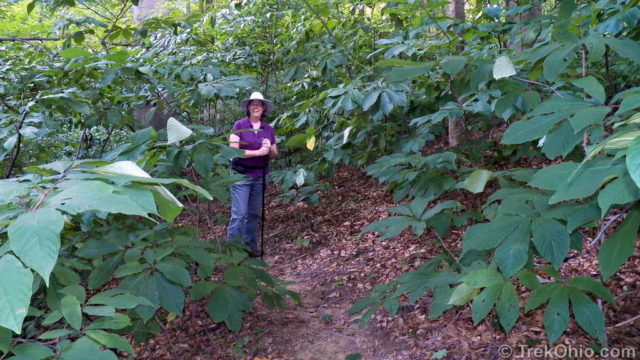
Pawpaws grow in the forest understory beneath much larger trees. Although they are a shade tolerant plant, they are unable to survive beneath the canopy of an old growth forest. When European settlers first reached what is now Ohio, much of the land was dark, primeval forest, so there couldn’t have been many pawpaw growing in the region then. However by the end of the 1800s nearly the entire state had been deforested as settlers opened up the land for farming. After the industrial revolution got underway, a portion of this farmland has reverted back to forest, and now pawpaws have become a common tree growing beneath the canopy of Ohio’s relatively young forest.
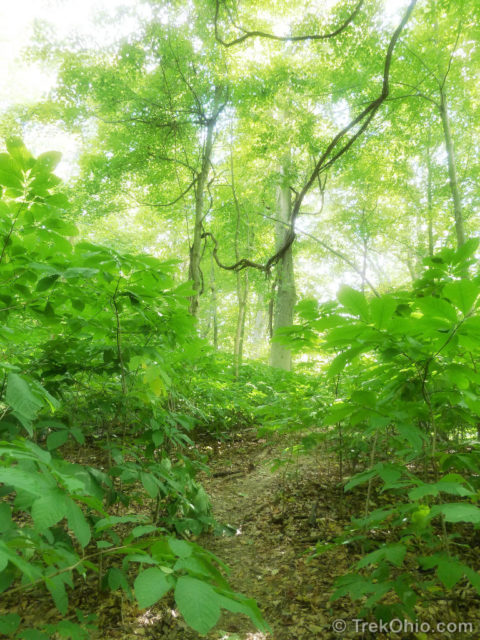
Reproduction
Within each patch of pawpaws, the trees are probably genetically identical; that’s because pawpaw primarily reproduce by cloning themselves. Like many woody plants that produce clones, the roots of the pawpaw tree develop suckers that eventually become trees in their own right.
Pawpaws can also reproduce by seed, but they must overcome several difficulties to succeed at this. An individual blossom of a pawpaw tree is not designed to pollinate itself even though it contains both the female and male parts of the flower. The pistil (the female part of the flower) develops before the anthers (the male parts that produce pollen). By the time the anthers are ready to release pollen, the pistil within the same flower has ceased being able to receive it. So the pistil in one flower must get its pollen from the anthers of another flower… which brings us to the next difficulty.
Because the pawpaw tree is found in patches, it might seem as though it would be easy for the flowers of one tree to be pollinated by a neighboring tree. However a pawpaw tree can’t fertilize another if the two are clones (they are said to be self-incompatible). So all of the genetically identical trees in one patch have to be pollinated by those in a more distant patch… which brings us to further difficulty.
The scent given off by the pawpaw flower supposedly smells like rotting meat. I say “supposedly” because I’ve never detected this scent when around a blossoming tree; it must be quite faint. Nonetheless the scent of the blossoms is meant to attract pollinators that want to lay their eggs on meat, such as blowflies, carrion flies and beetles. Unfortunately these insects don’t make reliable pollinators. While busy, little worker bees devote themselves wholeheartedly to gathering pollen, blowflies and carrion flies end up getting pollen on themselves because they were tricked. Once a carrion fly has brushed up against some pawpaw pollen, the carrion fly may end up depositing the pollen on carrion instead of transferring it to another flower.
The pawpaw blossoms appear in April and May. When the flower bud first unfurls it is green. Later it turns a deep maroon or even brown.
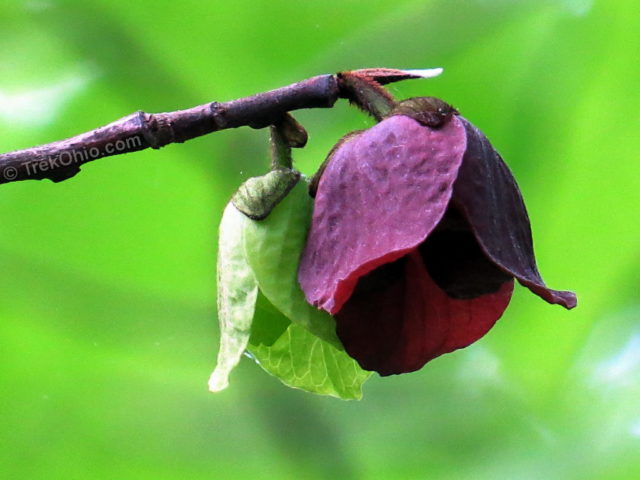
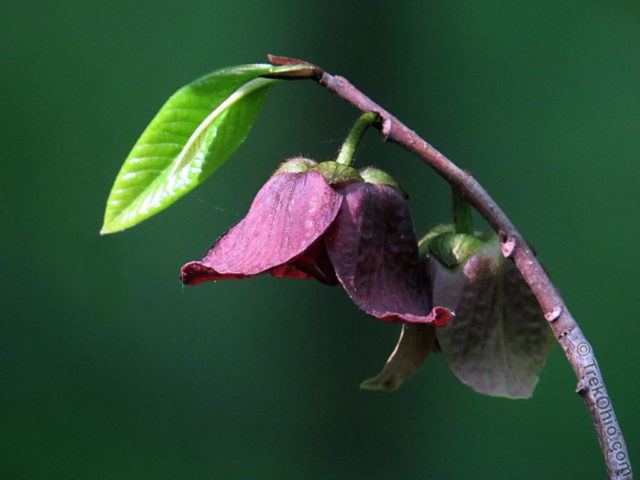
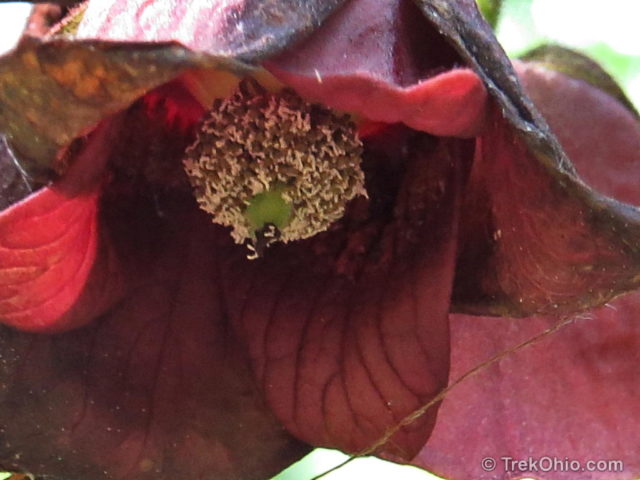
The Fruit
A fertilized flower becomes a green fruit on the tree. It may have a peanut-like shape or possibly a potato-like shape. The fruit grows individually or in clusters like bananas. As the fruit ripens it turns a greenish-yellow, eventually becoming more brown and finally getting dark spots. However to test ripeness it is better to give the fruit a gentle squeeze rather than go by its color. When ripe the fruit should yield a bit, much like a ripe peach.
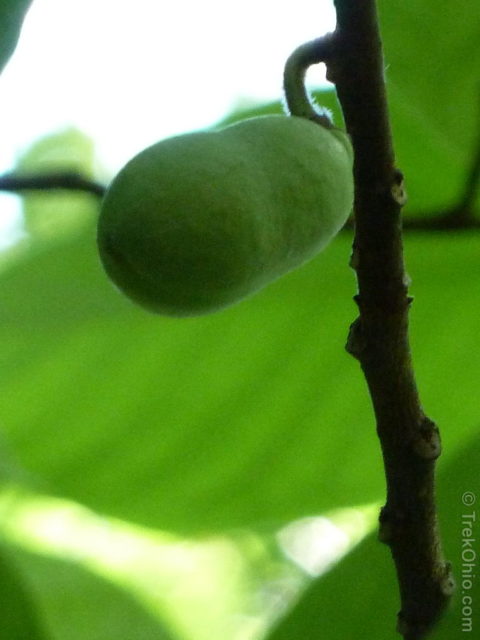
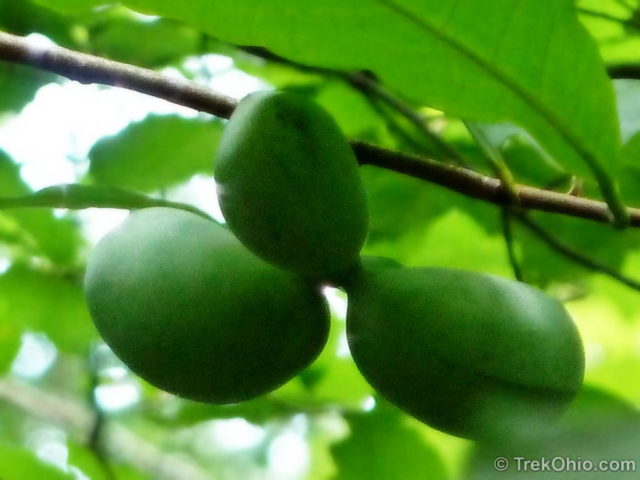
The fruit ripens and falls from the tree in late August through early September. Although pawpaws have been developed commercially, this hasn’t really taken off on a large-scale basis for a couple of reasons. One is that the fruit becomes over-ripe several days after ripening on the tree, although this can be extended to a week if picked while slightly green. Another drawback is that the flesh is soft and bruises easily, so it is a difficult fruit to ship.
Some fallen fruit are pictured below. These were about the size of a russet potato. However there are now domestic cultivars where an individual fruit may grow as large as two pounds and seem almost melon-like. The more fruit that are in a cluster, the smaller the individual fruit. So some farmers thin out large clusters so their yield will include larger, fleshier fruit.
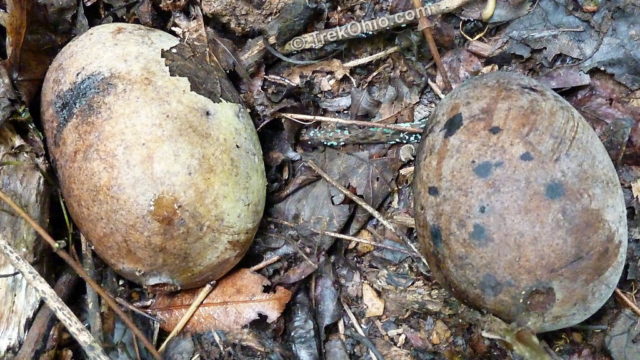
I decided to try one of the fallen fruit that I found while hiking just to see what it tastes like. A drawback to my plan is that the cultivated varieties are no doubt superior in flavor since they have been selected for their appealing taste. In addition pawpaw fruit is known to be highly variable in flavor, so there really isn’t a single, representative fruit. However since I had repeatedly heard how unique the taste is, I was curious. When others have described its flavor, they usually say it is like a blend of the flavors of papaya, banana, peach, and/or pineapple with an aftertaste of melon. The flesh is soft with a texture resembling that of an egg custard.
The one that I tried is pictured below. It is small compared to those that are grown commercially. With that said let me address its taste. I seem to be alone in my estimation, but the taste reminded me of kiwi, although the flesh was much mushier. In addition, there was something of an aftertaste.
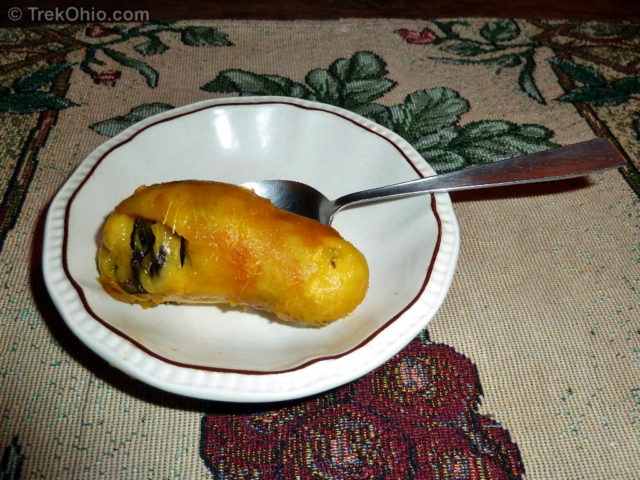
I was surprised at how big the seeds were relative to the flesh, but if you see photos of the commercial cultivars they have considerably more flesh per fruit.
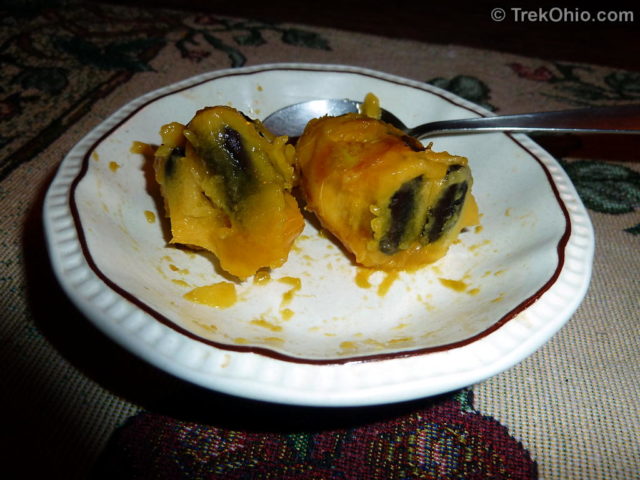
Apparently the tropical taste of the pawpaw is at least in part due to its aroma. To best appreciate this aroma experts recommend that pawpaw be eaten raw or chilled. So it is a good candidate for recipes where it can be blended into food without cooking it, such as ice cream, yogurt, smoothies, blended fruit drinks and frozen slushes. The fruit is rich in antioxidants; its nutritional profile most closely resembles that of a banana.
When heated the volatile chemicals that give the fruit its tropical aroma disappear. Nonetheless it is used in a number of recipes where it is cooked. It is frequently substituted for an equivalent volume of banana in recipes. So chefs will fold the pawpaw pulp into the batters of breads, muffins, and pancakes. The pulp can also turned into jams, jellies, and marmalades, and when fermented it can be turned into a wine.
A Bit of History
Hernando de Soto, the Spanish explorer, was the first European to observe Native Americans both cultivating and eating pawpaw fruit in 1541. Prior to the last Ice Age megafauna like the mastodons were responsible for dispersing its seeds. After the Ice Age it is believed that Native Americans were the biggest dispersers of the seed. Besides eating pawpaw fruit, Native Americans also harvested the fibrous inner bark of the trunk. By twisting these fibers the Native Americans created cords, ropes, fishing nets, baskets, mats and cloths. Parts of the plant also have an insect repellant property. Native American ground up the seeds and created a powder which they applied to their scalps to control lice.
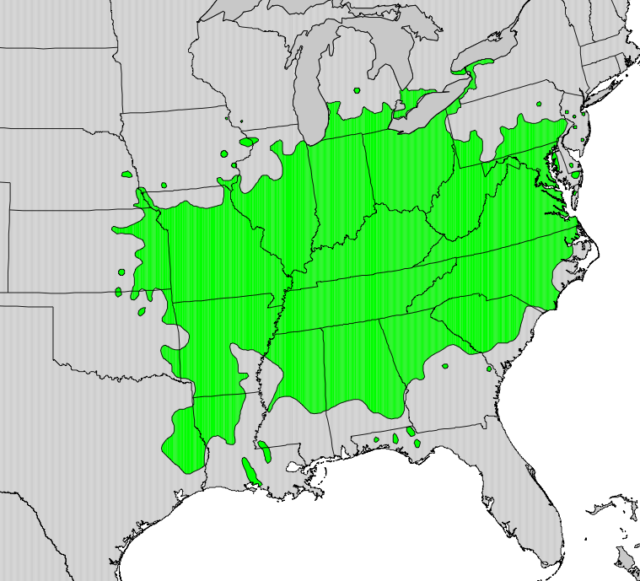
As people of European descent moved into the continent, a number of famous individuals became fanciers of the fruit. It was a favorite dessert of George Washington who liked to eat it chilled. Thomas Jefferson cultivated pawpaws on his Monticello estate. When Jefferson sent Lewis and Clark on their expedition across the continent, their crew would never have returned had it not been for the pawpaw. In their journal entry for September 18, 1806 Lewis and Clark reported that eating the fruit of the pawpaw saved them from starvation. Daniel Boone and Mark Twain were also fans of the fruit.
The pawpaw tree played a role in the notorious Hatfield vs. McCoy feud. During the heat of an election-day argument, three of the McCoy brothers stabbed Ellison Hatfield to death. In 1882 this act of violence gave birth to a feud when the Hatfields retaliated by hunting down the McCoy brothers, tying them to pawpaw trees and executing them.
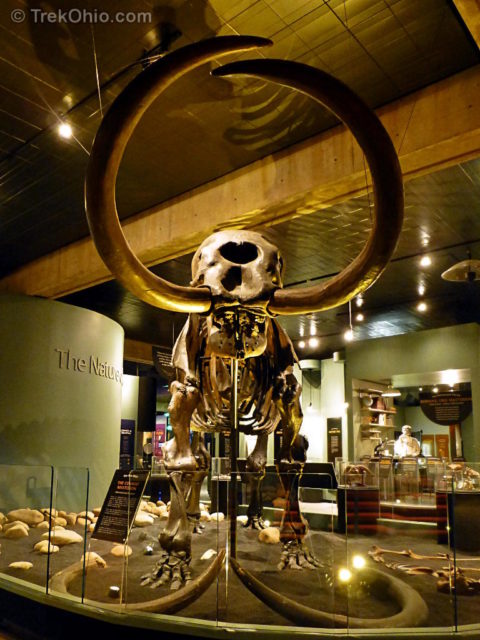
Contemporary animals who relish the pawpaw fruit include foxes, raccoon, opossums, and bears. Deer will eat the fallen fruit, but they will not browse on the bark, twigs or foliage because of an amazing substance in this part of the plant that acts as a repellent.
The Bark and Foliage
The bark and foliage of the pawpaw contains a class of natural insect repellent known as acetogenins. Not only does this repel insects, it gives the bark and foliage a disagreeable taste that keeps deer, rabbits and goats from browsing on it. Because deer will browse on other, nearby plants while leaving pawpaw alone, the deer eliminate the pawpaw’s competition and help pawpaw to dominate its plant neighbors.
The fact that pawpaws grow relatively pest-free without the use of man-made insecticides has spurred renewed interest in the fruit on the part of organic farmers. Nonetheless there is one insect that can tolerate acetogenins present in the pawpaw leaves, and that’s the larvae of the zebra swallowtail butterfly. These larvae dine exclusively on pawpaw leaves, but since only a few such larvae are present on any individual tree, the larvae don’t really damage the tree. Apparently eating acetogenins make the larvae taste bad to birds and other predators. This bad taste continues to protect it from predators even after it has been transformed into a butterfly and is no longer eating pawpaw.
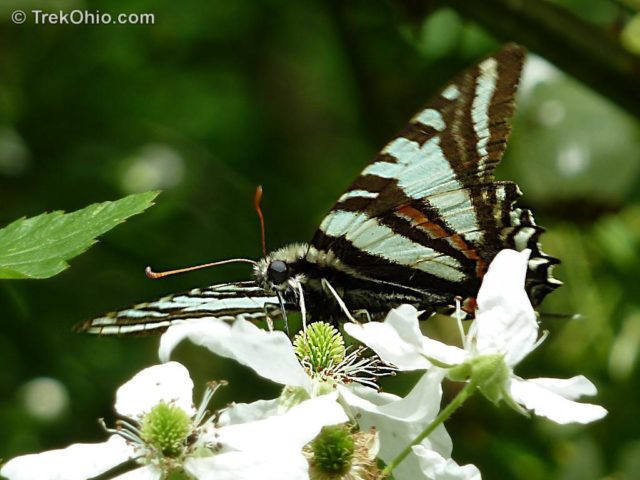
The leaves of the pawpaw are huge and tropical-looking when compared to our other native trees. They turn a bright yellow in the autumn before falling. Below are two photos of the fall foliage. The first one gives you some idea as to how the leaves are arranged on a branch. In the second one I placed my hand on a fallen leaf just to give you some idea of how large they can become.
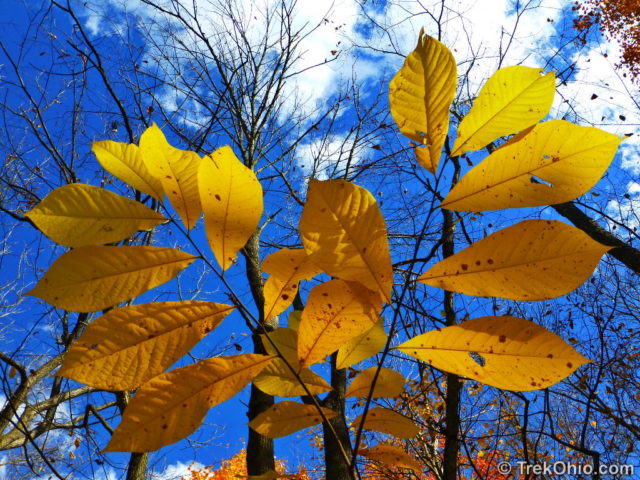
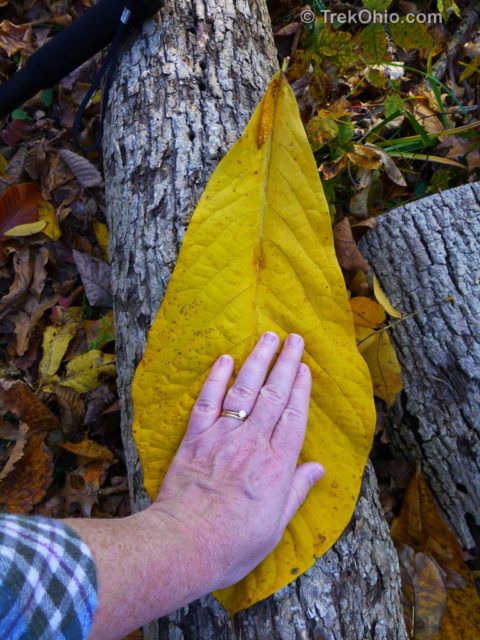
And here’s what the bark looks like. This relatively small trunk was photographed in winter.
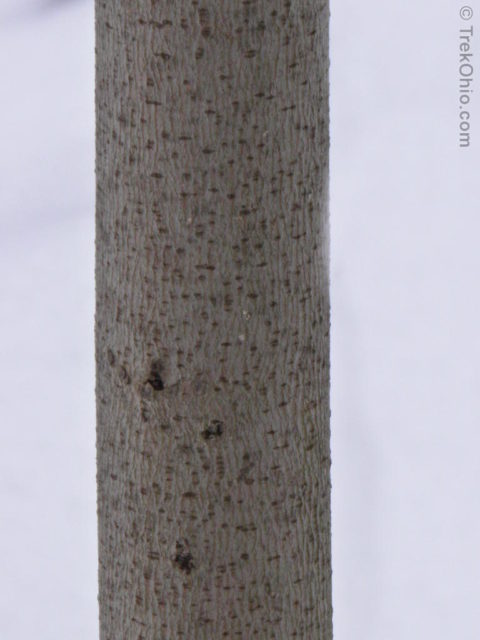
Can it even cure cancer???
There is a chemical in the seeds that has been shown to be selectively toxic to the cancerous cells of prostate and colon cancer. Researchers are exploring the properties of this chemical with the hope that it may eventually lead to a pharmaceutical treatment for these cancers.
For more information about the festival, checkout the organizer’s web page or go to their Facebook page.
Additional information
- Ohio Pawpaw Festival — This website is updated every year with information on the latest festival.
- TrekOhio: A Visit to the Ohio Pawpaw Festival — Describes our experiences as the 2013 festival.
- TrekOhio: Athens County Parks & Nature Preserve – This is the county where the Pawpaw Festival is being held; check it out to learn about other nearby parks and nature preserves.
- Wikipedia: Asimina triloba (Latin name for Pawpaw).
- USDA Plant Guide: Pawpaw (PDF)
- Kentucky State University: Pawpaw Planting Guide; this university has a research group that is working on developing commercially viable cultivars.
- Clemson University Cooperative Extension Service: Pawpaw
- Flatbush Gardener: Asimina triloba, PawPaw
- Pawpaws, A Uniquely American Fruit – by an online grocer
- Wikipedia: Clonal colony
The Ohio Pawpaw festival
If you are curious about pawpaws, you can become better acquainted with them at the 15th Annual Ohio Pawpaw Festival that’s being held September 13-15, 2013 at Lake Snowden.
Location
I have included a Google map showing the festival location at Lake Snowden below. The address for the festival is 5900 US-50, Albany, OH 45710
The festival hours are as follows:
- Friday: 4 pm – midnight
- Saturday: 10 am – midnight
- Sunday: 10 am – 4 pm
Admission is $10.00 for a one-day pass, and $20.00 for a weekend pass; children 12 and under are admitted free. It is possible to camp in the area, but campsites with electrical hookups have already been sold out.
More on Trees

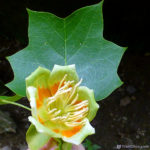
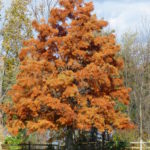
I have purchased two paw paw trees, how far apart should I plant them.
The pawpaw has been a niche fruit in Japan from way back. The University of Kentucky’s pawpaw website has a 2016 presentation about the Japanese pawpaw market.
Your pictures were beautiful as well as helpful.
A mammal has been harvesting my pawpaws at nights. My corgi finds them during the day , treats them as if they well on of the tennis balls she plays with. By the time she finally gives them up to me they are not worth eating for human consumption. However, she lustily gorges on them.
Sue, what a great story! I didn’t realize what fun corgis could have with pawpaws. 🙂
I have been at the pawpaw Ohio festival a few years ago. love pawpaws but prefer the none bitter and least banana like fruits. What would be the best specie of trees for me to plant and should i have two trees for best production.
Francoise, I’m afraid I don’t know enough about the cultivated varieties of pawpaw plants to advise you. Sorry.
When deer get desperate they will eat pawpaw leaves as they did just do to my pawpaws this late August.
Pat, thank you for sharing your experience with deer munching on your Pawpaw leaves. I didn’t know that they would do this.
Can I grow paw paw, in Eurpe, Hungary.
Thanks John
Asimina triloba (paw paw) is a native North American plant. But a quick search of Google shows a number of European nurseries that cultivate and sell it (http://www.fruitiers-rares.info/articles-A123a128/article126-non-French-nurseries-for-rare-fruits.html). Please be aware that some North American plants have thrived in Europe with sufficient vigor to become a problem (invasive species).
we have 2 paw paw trees, at least 8 years
old, and this year there were a lot of fruits, but after 10 days (and 1 cm big) all had gone. I think they were eaten by birds. Is it possible?
Thanks for the answer, regards! Lucy
Lucy, I was just looking into this. According to the Lady Bird Johnson Wildflower Center, the fruit is eaten by a variety of wildlife, including opossums, squirrels, raccoons, and birds. So birds may have gobbled up the fruit, but some of these other animals may also have been dining on your pawpaw.
As much as I used to frequent the woody areas of the parks this is something of which I knew next to nothing. With this information and the photographs I’ll be on the lookout for this tree (bush). I have often heard of the pawpaw but was not paying close enough attention. Your posts are so refreshing because they are well researched and thorough.
Thanks, Patricia! I did quite a bit or research on this one.And it seems once you learn about a plant like this, you start noticing it more and more.
this was very informative, I heard pawpaw were edible and tasted a bit like banana but looking at one it seems a bit mushy and I don’t do mushy to well including bananas, did you like it? did the texture gross you out at all? thanks for all the pictures now I feel like I will be able to recognize one when I see it, and the history was nice too.
Roberta, thanks! The pawpaw that I tried was mushy, but I think if it were mixed into something that was supposed to have a smooth consistency, like yogurt or ice cream, that would work out really well. I was a little put off by the aftertaste, but in my reading this varies widely among varieties.
I guess it’s kind of like apples. I love McIntosh apples and Fuji apples, but I’m not so very fond of Golden Delicious. If I can make it to this festival I should be able to sample enough of the stuff to finally know what I think of them. 😀
It’s fun to know a little more about the plants that I’m seeing while I’m hiking. I didn’t use to notice pawpaws, but now that I know about them, I see them all the time.